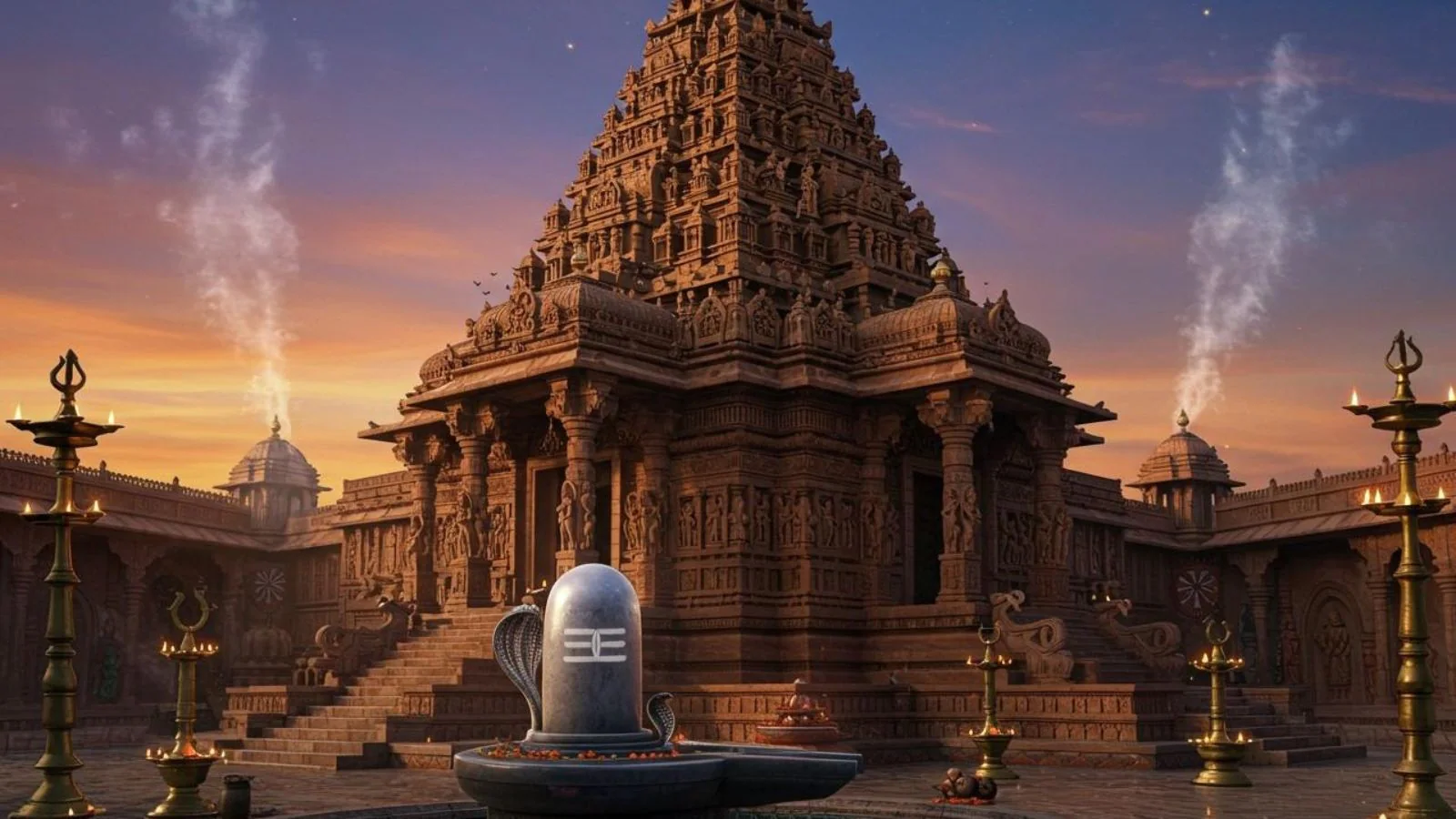Copyright news18

The Himachal Pradesh High Court’s recent verdict has revived one of the most enduring debates in independent India — whether Hindu temples should remain under state control. Hindu seers, scholars and activists have for too long demanded an end to the government’s persisting administration of temples violates constitutional guarantees of religious freedom. The issue gained national attention after the high court’s landmark ruling in Kashmir Chand Shadyal v State of Himachal Pradesh on 14 October, which reaffirmed that temple funds belong to the deity, not the state. The division bench of Justices Vivek Singh Thakur and BC Negi declared that donations to Hindu temples were sacred offerings and could not be diverted for secular (not Hindu-specific, non-religious) schemes. Every rupee of temple funds, the court ruled, must be used for the temple’s own religious activities or dharmic charities consistent with its traditions. Any misuse will now constitute a criminal breach of trust. The bench also reaffirmed that, under Articles 25 and 26 of the Constitution, blanket administrative orders could not curtail a community’s right to worship. The state, it said, must balance faith and public order case by case, not through broad prohibitions that infringe upon religious freedom. The petitioners had also challenged the arbitrary restrictions on devotees’ access during festivals. The state of Himachal Pradesh manages over 20,000 temples through the Himachal Pradesh Hindu Public Religious Institutions and Charitable Endowments Act, 1984, which empowers the government to supervise donations and even divert surpluses to public welfare. Such laws, which have counterparts in several states, are relics of colonial policy. The court’s verdict effectively questions this framework, recognising the deity as the rightful owner of all temple assets. The Case For Freeing Temples From State Control The verdict assumes importance in the light of a series of exposés showing widespread corruption, mismanagement and politicisation of temple boards across India. These cases reveal the structural flaws of state control and the need to return temples to community management. Below is a compilation of nine recent case studies (state, temple, nature of anomaly, outcome/status): What’s particularly disturbing, for all such cases of corruption, Hindus are blamed, with the detractors seeing a lack of morals typical of the community, for no fault of its own. The high court judgement strengthens a movement that views temple autonomy as a civilisational necessity. By law, a temple is not merely a public institution but the abode of a living deity — a juristic person with legal rights. The management of its property, rituals and donations is thus a sacred duty, not a bureaucratic assignment. When the state administers temples, it acts as an intermediary between the deity and devotees — something alien to dharmic jurisprudence. Historically, colonial authorities took over temple administration under the pretext of preventing mismanagement. The Madras Religious Endowments Act of 1925 institutionalised this control, allowing government commissioners to oversee temple finances. Instead of dismantling this system after Independence, states expanded it, resulting in a situation where Hindu temples alone remain under government control. Churches, mosques, gurdwaras, pagodas, synagogues, Jain temples, Parsi temples, etc, are managed by their respective communities. Opponents of decontrol claim that communities would mismanage temples if the state withdrew. This fear mirrors the condescending British rulers who once thought Indians were incapable of governing themselves. The high court ruling rejects this patronising attitude, recognising that devotees and hereditary trustees can ensure transparency when empowered by law. But the system must move a step further, telling the state how temples are managed is none of its business. When the East India Company arrived in India, its officials salivated at the sight of temple wealth, saw a cash cow, and made an excuse of governmental oversight. Between 1810 and 1817, they implemented a series of laws in the presidencies of Bengal, Madras and Bombay that granted them the authority to intervene in the administration of temples. Nevertheless, the perception of a ‘Christian’ government managing Hindu temples resulted in the Religious Endowments Act of 1863, which transferred control of temples to committees appointed under British law. However, the judicial authority over temple administration — through the extension of the Civil Procedure Code and the Official Trustees Act to temples, as well as the Charitable and Religious Trusts Act of 1920 — enabled the government to maintain substantial influence. The first specific legislation concerning Hindu temples was introduced in 1925 with the Madras Hindu Religious Endowments Act. After Independence, most states retained and expanded these colonial mechanisms, rather than returning temple managements to sevādārs that ran them in the pre-British era. The Tamil Nadu government took control of temples from priests in 1959, and resentment against this has existed for decades. The state’s resistance to letting temples slip out of its hands stems also from the north Indian nescience about ancient and medieval management of different temples by different denominations of Hindus. They wonder who the new authority of a given temple will be, as they believe every temple is for every Hindu. It isn’t. Southern India preserves varied sectoral temple managements by Shaiva, Vaishnava, Shakta and Smartha traditions, each with a distinct theological and ritual discipline. Northern India, having endured centuries of invasions, lost these institutional frameworks; then came the British, who were followed by brown sahibs to take undue advantage of the void. Reviving sampradāya-based management would restore both religious authenticity and administrative efficiency. When structures such as the Ramanandi lineage guiding Ayodhya’s Ram temple or the Travancore royal family managing Sree Padmanabhaswamy temple are absent — as would be seen often when recently established temples are freed — management should go to the devotees who built the shrine and those who donate to it. Even donors cannot but have the final say in an affair of the temple; for if this provision remains, benighted blokes and mischief mongers may infiltrate into the temple management. If one’s religion is personal, a temple is as private as one’s home. The way the state does not intervene in one’s family affairs unless a member of that household complains, it should lay its hands off temples unless a criminal activity happens inside a temple, a crime is committed by a temple manager, or a member of the sect whose temple it is — the temple’s family — lodges a first information report. Most glaring verdict The unfamiliarity with sects of Hinduism most infamously affected the Supreme Court’s 2018 verdict on Sabarimala, where north Indian judges, mostly exposed to only Vedic Hinduism, struggled to appreciate Tantric Hinduism. By striking down the Ayyappa tradition restricting the entry of women of menstruating age, the court: dispensed with the idea of the deity’s celibacy disregarded the spiritual consequences of violating a ritual ignored the fact that the same shasta (a knower of shastras or ruler of a realm) allows women in other shrines where he isn’t in the state of brahmacharya, and dismissed the gender-balancing fact that some Hindu temples do not let men inside either. Thus, the apex court failed to grasp nuances along with fairness in Hinduism, and fell short of logic, unable to measure up to religious as well as secular yardsticks, neither of which it would dare to do with non-Hindu religions. No wonder then that a few sects like the Lingayats of Karnataka and the Ramakrishna Mission established in Bengal want to be recognised as non-Hindu groups or establishments with the hope that the state would spare them its high-handedness. When the state takes over temple funds or administration, it is, in effect, asserting authority over a divine entity — a principle fundamentally at odds with dharmic belief and constitutional freedom of religion. By its very secular nature, the state, along with its wings — the legislature, the executive and the judiciary — render themselves incompetent to judge a religious matter. No court has ever directed Muslim clerics to allow women to congregate with men on a common prayer ground for salah (namaz), and rightly so. No court forced Christians to unify the rituals of Catholics, Protestants, Baptists, Methodists, Pentecostals and St Thomas denominations, where the judiciary’s non-interference is right again. But the Supreme Court applied notions of a monolithic Hindu community to rule that if women could enter any temple in the North, they could jolly well enter any temple in the South as well. The “relationship with God can’t be defined by biological or physiological factors”, a judge on the bench said. “God”? That’s a Judeo-Christian concept applied to Hinduism! What to talk of clubbing all Hindus together, the court did not find it fit to object to the police’s action of escorting a Muslim woman, Rehana Fathima, to the shrine to test whether the court order could be executed! Voices That Kept The Cause Alive Public figures and legal thinkers have sustained the campaign for temple autonomy for years. Shri Shankara Vijayendra Saraswathi, the 70th Jagadguru Peethadipathi of Shri Kanchi Kamakoti Peetham, Kanchipuram, advocated handing over the temples and their property to the temple authorities this year. Sadhguru Jaggi Vasudev launched a nationwide ‘Free Temples’ initiative. He framed the issue not as a religious demand but as one of equality and constitutional fairness. Engineer-turned-lawyer J Sai Deepak, who has argued several temple-related cases, added intellectual heft to the movement, no less through his viral videos than through his appearances in courts. He explains that the deity, as a living legal entity, is the valid owner of the temple’s assets, and the state’s continued control amounts to expropriation. He reminds us that Articles 25 and 26 guarantee every community the right to manage its own religious affairs—a right denied only to Hindus. But humble that he is, he credits Swami Dayananda Saraswati of Arsha Vidya Gurukulam, TR Ramesh and Krish Nagarajan for initiating the ‘free temple’ movement. In 2024, the Vishva Hindu Parishad launched a nationwide campaign to “free temples” from government control. Roadmap Ahead Together, these voices have ensured that the issue of temple autonomy stayed alive in public consciousness, culminating in a moment like the Himachal Pradesh High Court’s ruling, which now offers legal validation to what devotees have been demanding for years. The state must step back from controlling places of worship. Temples are living embodiments of faith, in no way a playground for laïcité. By returning temple governance to devotees and sampradāyas, a historical wrong can be corrected, reviving the pristine dharmic model of temple management. The Modi government must decolonise the administration of Hindu temples, making them transparent and accountable to the right set of people, yet spiritually vibrant. The author is a senior journalist and writer. Views expressed in the above piece are personal and solely those of the author. They do not necessarily reflect News18’s views.



